With the advent of technology, the term design started to mean many things.
From just being used in industrial designs to denote designing physical objects, it has started to denote designing digital and non-physical objects.
Along with the various specifications comes confusion. The terms product design and UX design are always confused with each other.
The confusion is mostly because both the terms are associated with creating products that satisfy the users.
In this article, we will explain the product design and UX design process in detail, listing their resemblances and variations.
Let’s begin.
What is Design?
Design is a process of ideating and creating a plan to address a need or to solve a problem. In case you are confused, here is a quote to make design understandable for you, by Alina Wheeler, a branding specialist, and an author,
“Design is intelligence made visible.”
According to Steve Jobs,
“Design is not just what it looks like and what it feels like. Design is how it works.”
This statement brings a realization that design is not just the looks, it’s mostly about the function.
Let us plunge into understanding product design and UX design now.
What is product design?
Product design is a process that begins with identifying user problems or needs. It involves creating solutions for the problem and testing them.
Product design is a vast process. And as a famous misconception dictates product design is not just about the appearance of the product.
Making the products aesthetically pleasing is a part of the process and not the entire process itself.
Example
Let us take a look at Kindle from Amazon. Kindle is an example of a great product design because it was designed considering many pain points of readers.
Storage space for books was one pain point. And Kindle solved it by storing thousands of books in that small tablet. This also solved another pain point of carrying bulky books.
Coming to the design, Kindle uses e-ink technology, which preserves a book-like feel in the text display. The e-ink technology advocates static display, which doesn’t refresh the screen, hence battery requirements are low.

These product design ideas have made Kindle popular and successful among its users, the reader community.
Elements of product design
Product design constitutes three key elements. These components need the utmost importance and attention in the designing process. Let’s see about the elements.
The appearance of the product
Making the product visually appealing and attractive to customers is very important.
But appearance is not just a one time noted element. As long as a product is used, the look of the product matters.
The aesthetics of the Swiggy app is on point. The Orange color used is pleasant. The fonts are easily readable. The whitespace and content are perfectly balanced. This appearance is rightly made to captivate the users.

The functionality of the product
When you cross out the good appearance from the checklist, it’s the functionality that gets the attention.
Functionality is the element that solves the user’s problem or satiates their need. A product’s function should exceed the expectations while solving the user’s issue.

Let’s take a look at Amazon’s design. The purpose of Amazon is to make a purchase online. The purpose is the main drive of functionality. Amazon has a prominent search bar enabling easy product search for all age users, personalized product recommendations, and offer displays.
Easy purchase is the primary purpose, and the functionality of Amazon satisfies it. The flow of process sticks to one important agenda: easy purchase.

Quality delivered to the users
The quality of the product is greatly influenced by product design. Quality control and quality assurance cannot fix the low quality because of poor design. The quality is defined by various attributes like consistent performance, stability, fault tolerance, and reliability.
For example: If you are using the Grammarly service, the product should be consistent in showing errors across all the platforms the service is opted for.
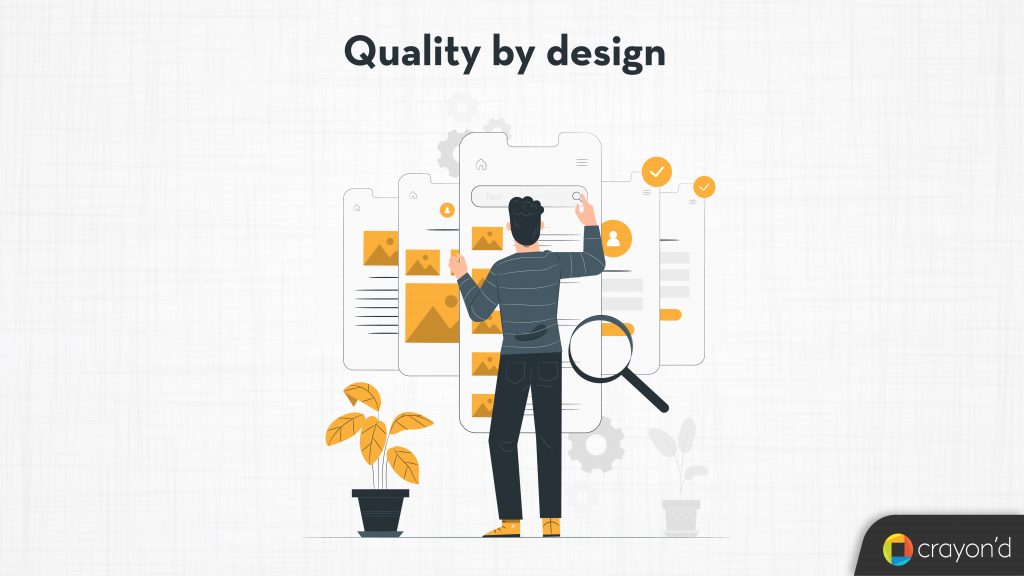
If you do justice to all three, you have created a great product.
Steps involved in the product design process
The production design process begins with identifying user pain-points. The process extends its contribution even after the product launch, perfecting the product at regular intervals.
Understanding user
‘Necessity is the mother of invention’.
Any product idea is born from understanding a user’s pain points. Knowing the pain point brings up the necessity to solve it. Also, product ideas are born from actual necessity too.
The first step in product design is understanding users and collecting data based on that.
Ideation
After studying the data collected, the design team would have reached a fair level in understanding the requirements of the user. With these, they come up with as many ideas as possible.
Brainstorming of ideas occurs in this stage. These ideas might have the potential to solve the user problem or satisfy their new needs.
Selection of ideas
Now that ideation is done, discussions and assessments happen. In this stage, the effectiveness and efficiency of the brainstormed ideas to solve the problem are discussed. And more viable ideas are selected.
Conducting market and user research
Once the suitable ideas are selected, you must make sure to look for your competitors (who have ideas similar to yours). This where market research is needed.
By conducting market research, you can understand competitors’ product features. It also exposes you to the new trends in the market.
User research gives a detailed understanding of your user behavior, their problems, and their needs in relation to your product idea. With this, you can arrive at a definition of your user persona.
Defining the product
With ideas alone, you cannot straightly get to designing the product. The minimum performance specifications for the product should be set based on data from the previous research.
A guide for giving clarity on functionalities that should be made and an approach to follow is framed. This will help you go ahead in the right direction with further processes.
Sketching
Sketches transform the idea into the design. The sketches help the designer visualize various design possibilities and narrow them down to the best design that sticks with the purpose and all requirements.
Prototyping
The feasibility and the user satisfaction of the product design can be tested by building a prototype. The prototype is a sample version of your final product, built to test the functionality and user likeability.
This is a crucial step in product design because it helps to detect errors and improvements before the actual product being built. This will save time, energy, and money going into something that is not useful and not profitable.
Testing prototype
Prototypes are tested with users. Their feedback and prototype performance during the test will be analyzed. This helps in improving product design.
When you arrive at a good design after prototyping many times, the product design is handed over to production.
Post-launch activities
Product design doesn’t end with the launching of the products.
Ensuring quality, heeding user problems that arise after the launch, and bringing necessary design changes as the world advances are all the responsibility of the product design team.
Thus we can say that a product design process begins, but it never ends.
What is UX design?
Before jumping into understanding UX design, let us see what UX is.
UX (User Experience) is the feel the user has when interacting with the product. UX is determined by various factors. They are depicted in the picture below.
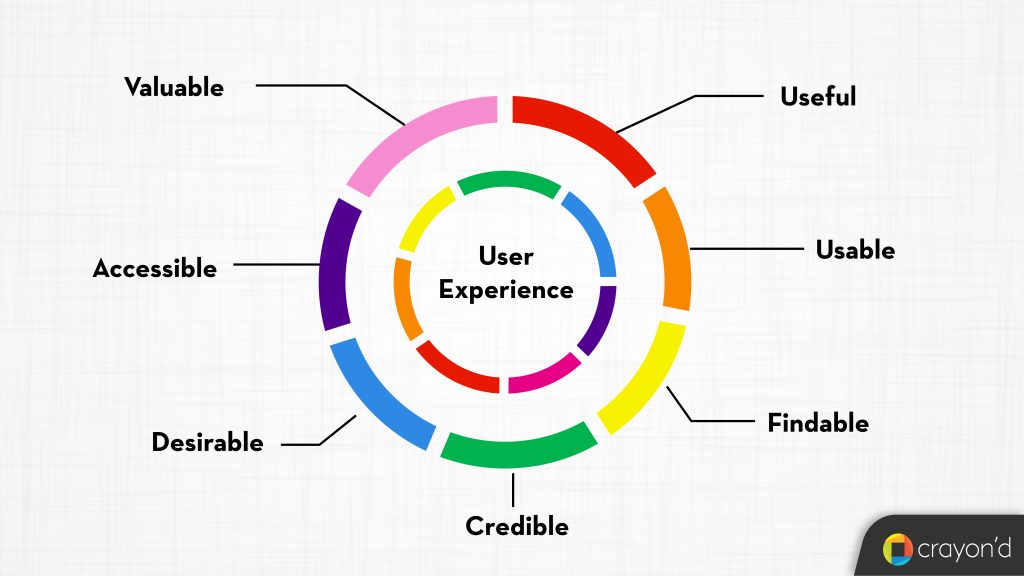
UX design is the process of enhancing the experience with regards to elements that the user interacts with. Hence it is necessarily a part of the product design process.
A good UX design is one that makes the interaction easy and efficient, justify the purpose, and provides an added value for the users.
History of UX design
UX design has become popular in the last few decades.
But would you believe it if we told you that the very concept of UX was prevalent 6,000 years back? In 4000 BC, a philosophy named Feng Shui existed in Chinese culture. Feng Shui advocates the arrangement of objects optimally and harmoniously with relation to the flow of energy.
Humans have always been looking for comfortable interaction experiences. Leaping and reaching the 1900s, a mechanical engineer named Friedrick Winslow looked into the interaction experience.
He suggested that human labor can be made efficient if human-tool interaction is made better. His theory was called ‘Taylorism’. The base for UX design thinking was thus set.
In the 1940s, Toyota introduced a human-centered production system for improving workplace efficiency. Going forward in 1955, Henry Dreyfuss, an industrial engineer from America, designed products that had improved usability.
In the 1960s, Walt Disney was involved in creating delightful user experiences. Disney World is always a pioneer in taking the user experience concept to the next level. In the 1980s, Apple released ‘Macintosh’ featuring the graphical user interface. This was a step forward in user experience consideration.
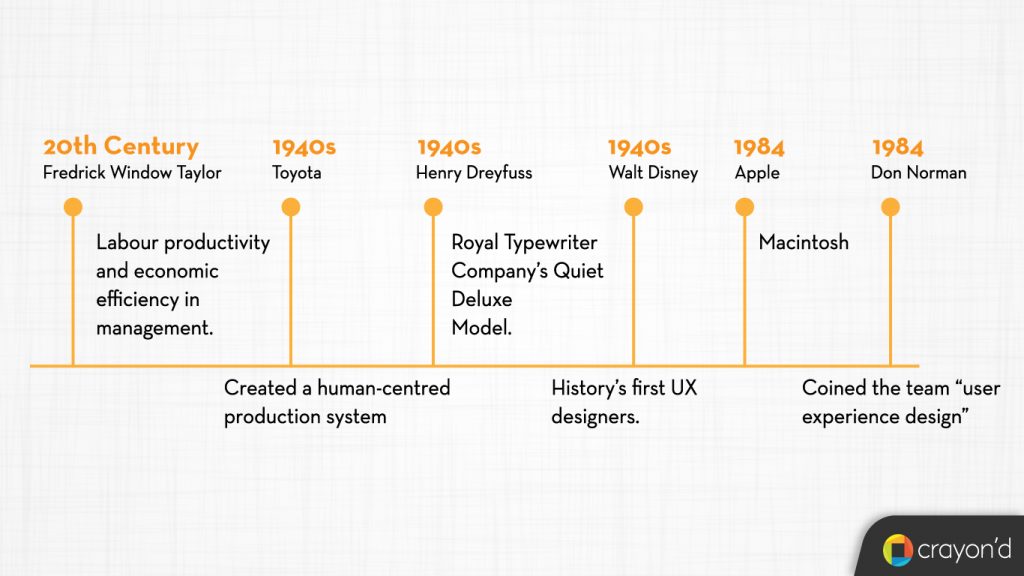
In 1995, Donald Norman, as he joined Apple, coined the term ‘User Experience Design’. He is instrumental in making UX design famous in the first place.
Elements of UX design
UX design is made up of several elements. The elements are interdependent. The elements act as levels, where the next level is built on the previous ones. Let us look in detail at the levels and their function.
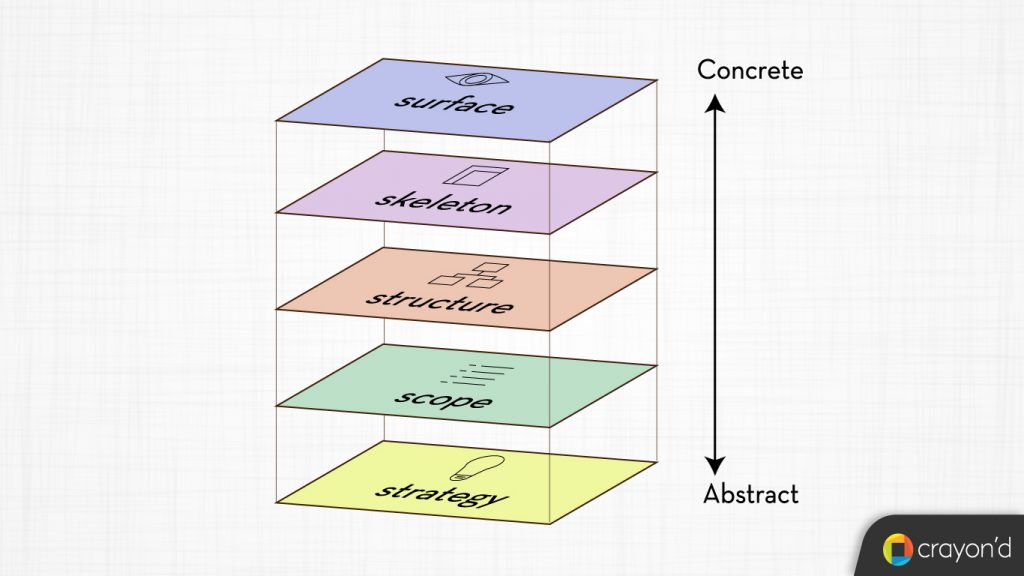
Strategy
UX strategy aims at defining the purpose of the product based on the user’s needs and technical capabilities that the product is expected to possess. UX strategy can be determined by conducting user research, prioritizing the product features.
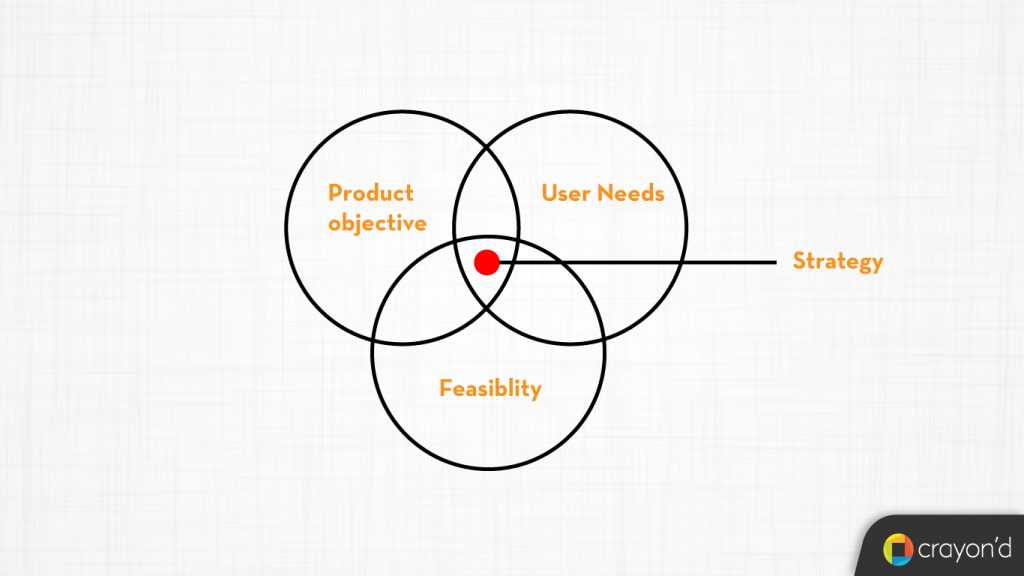
Scope
This element defines the functional specifications, which must be in tune with strategy and content requirements for the UX design.
Functional specification includes a list of required features and functions. For example, the user registration process in an app. Content is important in driving user experience.
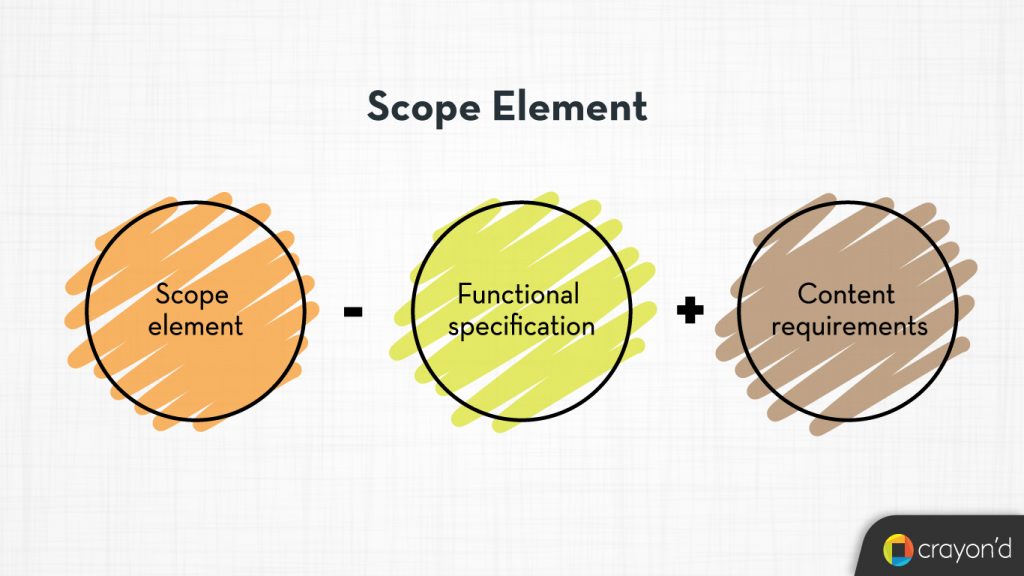
Structure
This element defines how the user interacts with the product and also the product response to user interaction.
This element is divided into 2 categories, interaction design, and information architecture. Interaction design is about the functional requirements, while informational architecture is about the content requirements.
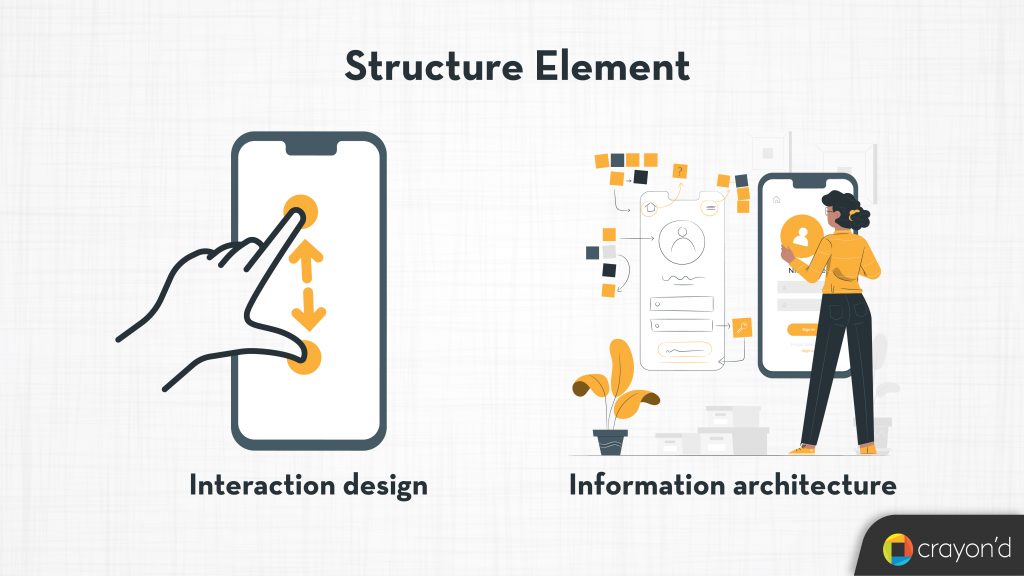
Skeleton
Skeleton is the element that defines the on-screen visual pattern and arrangement of all interactive elements. This has three categories namely,
Interface design- Determines the presentation and arrangement of interactive elements prioritizing user experience.
Navigation design- Defines how the navigation through the information should be in the interface.
Informational design- Defines how the presentation and arrangement of information must be for ease of understanding for the user.
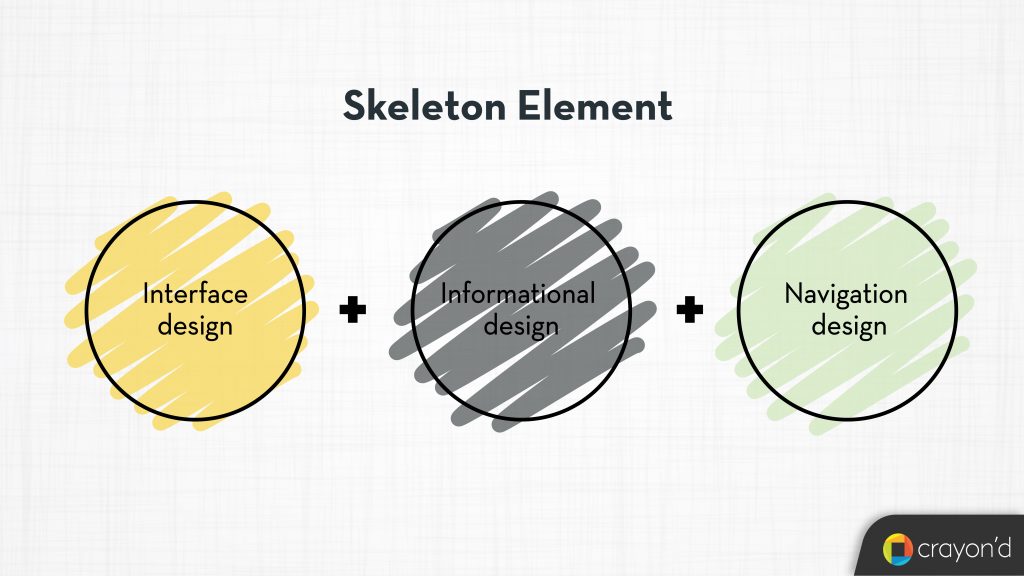
Surface
The surface element concentrates on the visual presentation of the elements on the screen. These visuals must communicate with users effectively.
The surface visual design components include colors, typography, layout, imagery, etc.
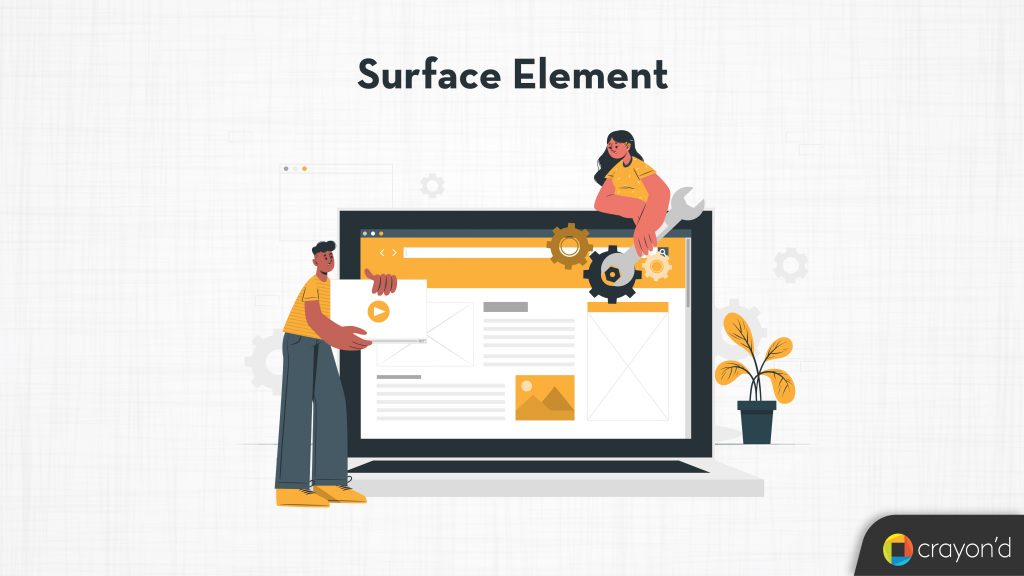
All the elements work together in determining user experience.
Steps involved in the UX design process
UX design usually employs a design thinking process. Let us look into various steps involved in the UX design process.
Understand
UX design processes cannot begin without understanding, so in this step, you learn about the user as well as the product design. You also understand how product design is instrumental in solving user problems.
This process also includes an understanding of the core values of the organizations and how the product design must align with them.
Research
Research is an important base for the UX design process. UX is all about users and their experience with your product. In the research step, you conduct 1:1 user interviews and surveys.
Analyze
As much as the research, analyzing the data is important. Only with the right analysis and interpretation, your actions forward will be easy. If there is a clear vision, designing becomes easy.
Design
With all the analytics, you start designing for UX. This step involves designing sitemaps, user flow, mockups, icons, colors, and wireframes.
Testing
Conducting usability testing helps the UX designers to evaluate the user experience they have created. This helps in improving UX design.
UX Design vs Product Design
Differences
Area of focus
- Product Design: Business goals and requirements, customer journey, complete product design including various design processes like UI, UX, and visual design.
- UX Design: Various usability of user experience problems.
Tools used
- Product design
- Research and definition tools: Real-time board
- Design: Sketch
- Low fidelity & high fidelity prototyping tools: Invision
- Product development handover tools: Frontify
- Productivity: Timely
- Collaboration: Slack
- UX design
- Wireframing tools: Balsamic
- Interactive design tools: Figma
- Prototyping tools: Invision
- Usability testing tools: Usertesting
- UX research: Lookback.io
- Collaboration: Slack
Similarities
Design Thinking
Both UX and product designers use design thinking as a part of their process.
Data analytics
Data analytics plays a huge part in both UX and product design. Starting from market and user research data analysis to user feedback data analysis, it is used in both processes.
Product designer vs UX designer
The main difference is that the product designer designs a product that aligns with the business goals, while the UX designer designs a product focussing on elevated user experience alone.
Responsibilities
As you have seen from the area of focus topic, you would have understood the vastness, the product design covers. The area of focus directly influences the responsibilities held.
That said, we will look at how the responsibilities of a UX designer vary from that of a product designer.
- Product designer
- Identifying new product opportunities
- Market research and customer need research
- Outlining product specifications to design team and stakeholders
- Prototyping to test functionality and user feedback
- Follow up the product development process
- Launch & post-launch activities
- UX designer
- Competitor analysis
- Conduct user interviews and surveys
- Conduct usability testing
- Create prototypes and wireframes
- Analyze and interpret data and feedbacks
- Create user-friendly applications.
Skills needed
Some skills that are common for both product and UX designers include communication, empathy, and curiosity.
- Product designers
- Business-oriented skills
- Decision making
- User research
- UI, UX & Visual Design
- Expertise in prototyping tools
- UX designers
- UX research
- Wireframing and prototyping
- UX writing
- Visual communication
- Coding
UX Design vs Product Design (Infographics)
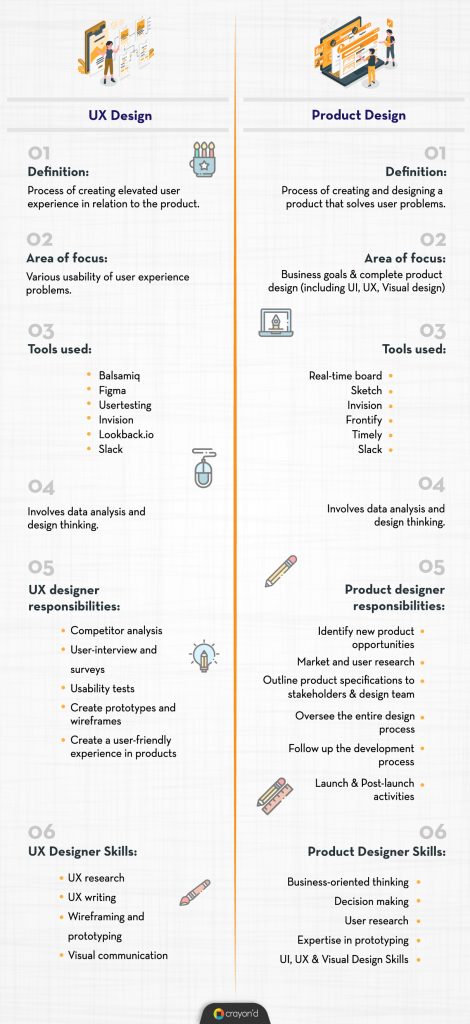
Endnote
Now, having read the comparisons, you would have known that product design is quite vast. And UX design is a part of product design.
In some companies, product designers also take up the function of UX designers. UX designers can evolve into product designers as well. This evolution occurs in improving their skills and ability to have a complete product vision instead of the narrow focus on just one functionality.
To conclude, product and UX design complement each other in creating great products for the user.


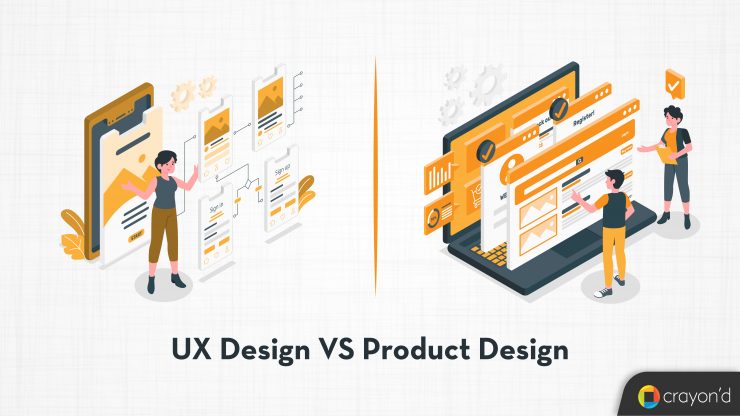




Add comment